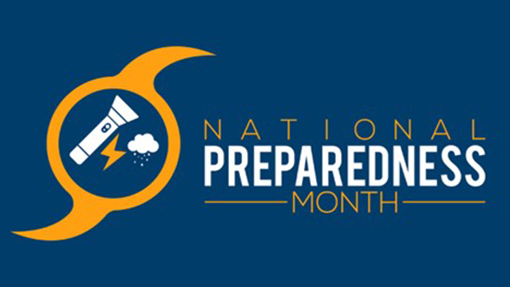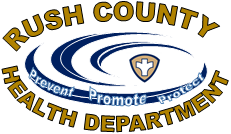Home > Preparedness
Public Health Preparedness
Emergency Preparedness plans for and responds to public health emergencies. This is done to ensure the health of the residents and visitors to Rush County.
Emergency Preparedness works to:
- Prepares and plan for public health emergencies with community partners and agencies with whom we respond.
- Coordinates with epidemiology regarding surveillance of disease within the county to ensure early detection of outbreaks.
- Plans for social distancing measures such as isolation, quarantine, and the closing of venues to decrease the spread of disease.
- Plans for the dissemination of health information during public health emergencies to ensure residents and visitors have the most accurate and updated information.
- Plans for mass countermeasure dispensing/vaccination to residents and visitors in the event of an emergency where medications/vaccines are available
- Exercises with community partners and agencies to ensure a timely and well-coordinated response.
Related Links
National Preparedness Month
In addition to being prepared with emergency supplies, it is important that you know how to protect your family from post-disaster threats and hazards, including power outages, and their effects on personal health, public health, and health care.
The Basics
- Check the batteries in your carbon monoxide (CO) detectors at least once a month to prevent CO poisoning. CO is an odorless, colorless, and tasteless gas that can cause sudden illness and death if inhaled.
- Pre-identify emergency departments, urgent care centers, dialysis centers, hemophilia treatment centers, veterinarians, etc. near your home and along your designated evacuation route.
- Learn and teach others practical skills, including safe generator use, to prepare for post-disaster health hazards, such as carbon monoxide.
- Pet owners: Plan where you and your pets will stay in case you need to evacuate your home. Pets may not be allowed in local shelters, unless they are service animals.


How to survive winter emergencies
Winter and extreme cold present unique survival challenges. Taking a little bit of time to learn things like how to drive in snow, what to do if you fall through ice, and how to create shelter if your home loses heat are valuable skills that can save your life.
Check out a guide on winter emergency survival kits so you can get your home, car, clothing, and bug out bags prepared ahead of time.
Top winter survival and cold weather tips
- Prepare! Follow a winter survival kit checklist for tips on proper clothing, winter car kits, home supplies, and more.
- Hypothermia and frostbite are the real dangers. Even in 50 F temperatures, you’re at risk of losing too much core and limb heat.
- Protect your body heat. Protect it, trap it, and treat it like the precious resource it is.
- Keep covered. Wind and exposure are the enemy. Exposed skin accelerates heat loss, especially through wind.
- Dress in layers. The air trapped between each layer holds your body heat, like your own personal hot tub. Plus, layers give you better control over regulating body heat so you can avoid dangerous sweating.
- Avoid sweating and stay dry. Besides moisture loss, sweating is bad because water on your skin makes you colder. That’s why we sweat to begin with — it’s the body’s air conditioning system.
- Snow is an insulator. Don’t be afraid to use it for shelter.
- Avoid eating snow. You lose a lot of core heat by melting snow inside your body. Melt it outside your body instead.
- Hydrate. Severe cold can be just as dangerous as severe heat. Stay hydrated.
- Don’t travel unless you have to. Conserve energy. Stay where you’re most likely to be found. Especially if you’re in a nasty storm where navigation and shelter is difficult.
